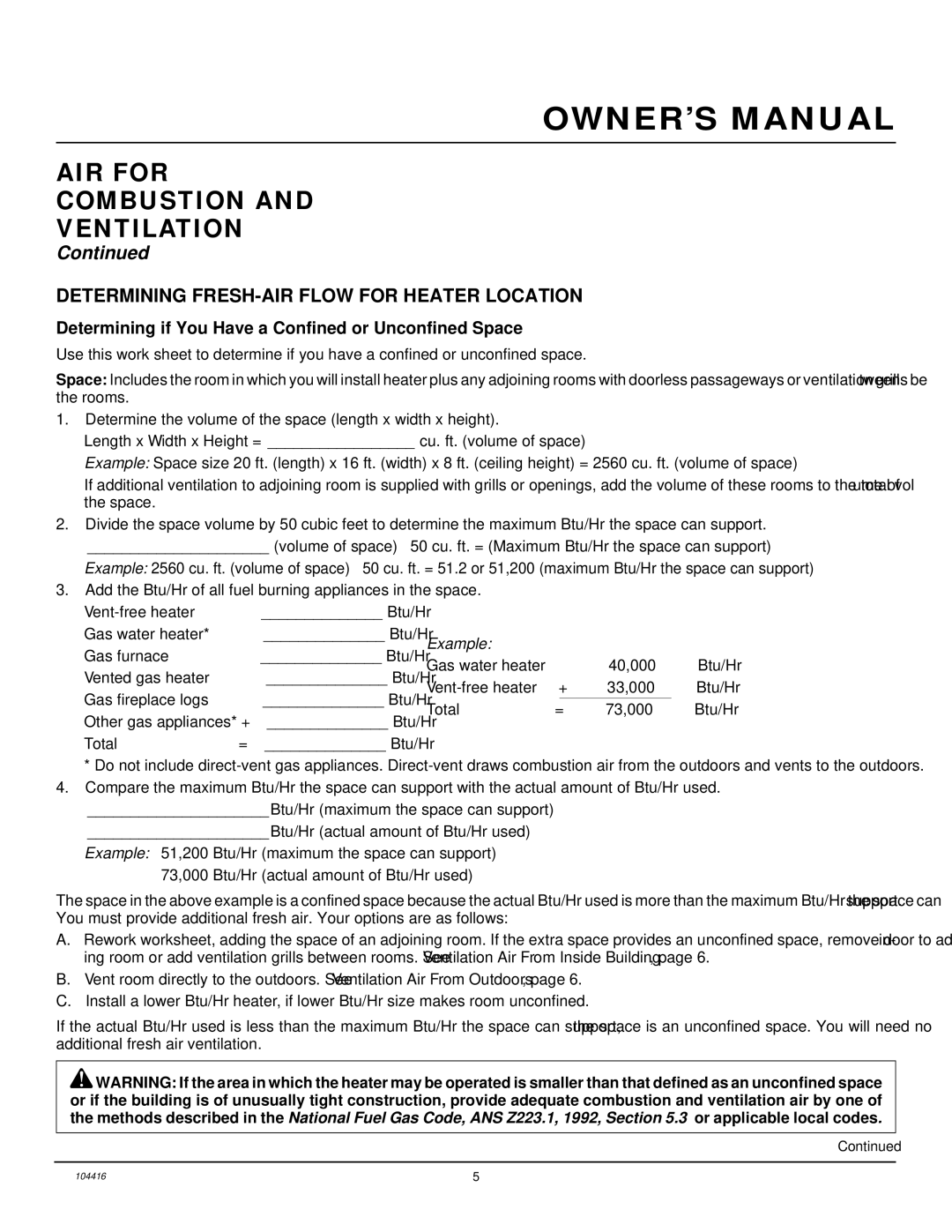VS30NRA, VS18NRA, VS24NRA, CFS18NRA specifications
Desa, a well-known manufacturer in the heating and light industry, has developed several innovative products: the VS24NRA, VS30NRA, CFS18NRA, and VS18NRA. Each of these models showcases unique features, advanced technologies, and characteristics designed to cater to diverse consumer needs.Starting with the VS24NRA, this unit is celebrated for its efficient heating capabilities. It boasts a powerful design, ideal for medium-sized spaces. Featuring an advanced combustion system, it ensures optimal fuel usage, translating to lower running costs and reduced environmental impact. The VS24NRA is equipped with an adjustable thermostat, allowing users to maintain desired temperatures easily. Its sleek and modern design allows it to fit seamlessly into various interior environments.
Next, the VS30NRA takes heating efficiency a step further. With a higher BTU output, it is suitable for larger spaces requiring more substantial heating solutions. This model incorporates cutting-edge heat distribution technology, ensuring even warmth throughout the room. Additionally, the VS30NRA is built with premium materials that enhance its durability, making it a long-term investment for homeowners. Its electronic ignition system contributes to convenience, allowing for quick and hassle-free startups.
The CFS18NRA stands out with its dual functionality by combining both heating and cooking capabilities. This model is ideal for those looking to maximize utility in smaller spaces. It features a contemporary design and compact build, making it an excellent addition to cabins, tiny homes, or other limited areas. The CFS18NRA utilizes infrared heating technology, which warms objects directly rather than relying solely on heating the air, creating a cozy atmosphere with minimal energy consumption.
Finally, the VS18NRA offers a balance between size and efficiency. It is tailored for modest environments, providing consistent warmth without overwhelming the space. The VS18NRA comes equipped with a user-friendly control panel, giving users precise control over settings. Its portability makes it a versatile choice for different rooms in a home or for outdoor gatherings.
In summary, Desa’s range, including the VS24NRA, VS30NRA, CFS18NRA, and VS18NRA, caters to a variety of heating needs. Their use of innovative technologies and emphasis on efficiency showcases Desa’s commitment to quality and customer satisfaction. Each model presents distinct features that make them suitable for a range of applications, ensuring homeowners can find the right solution for their heating needs.

